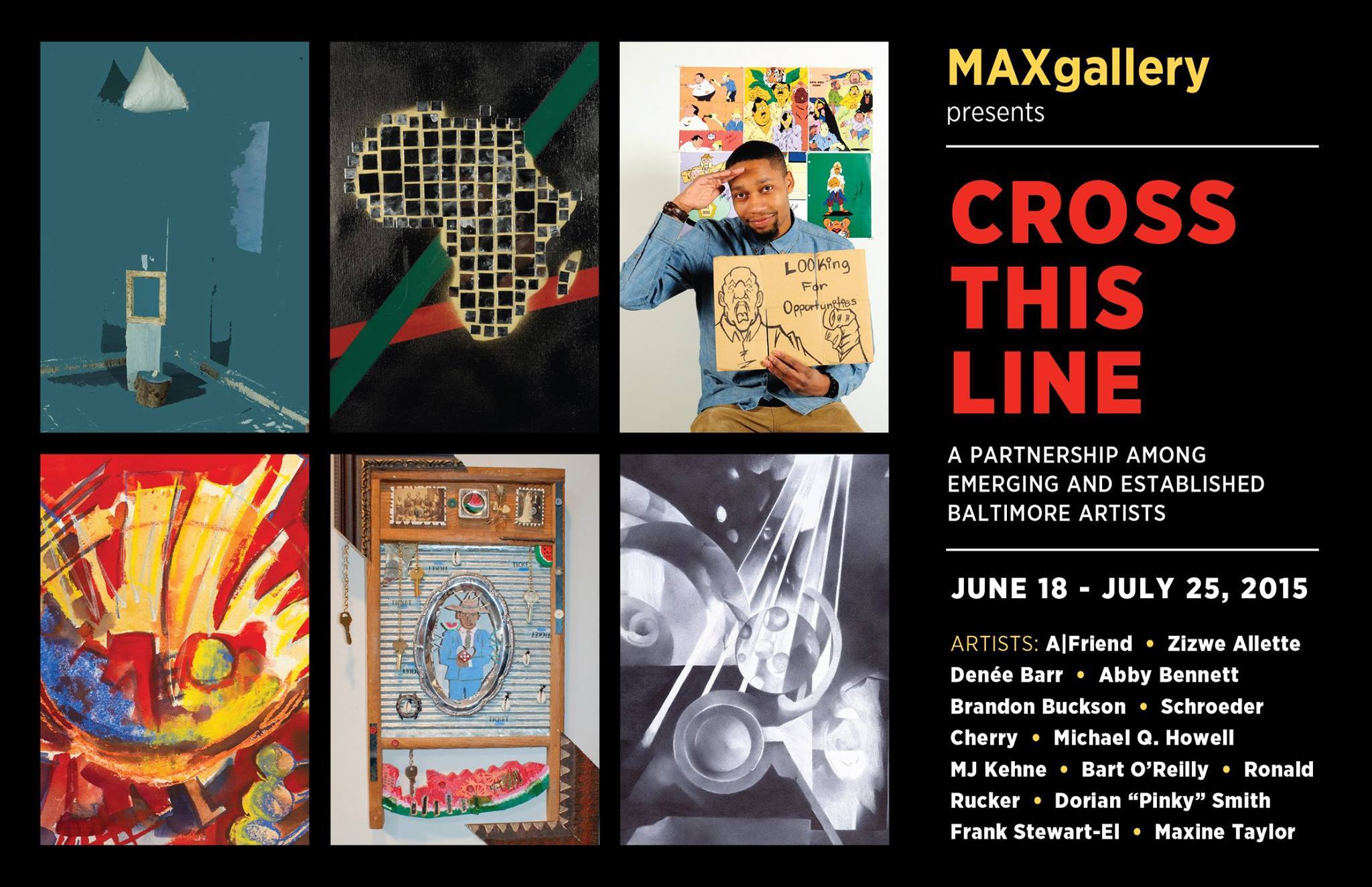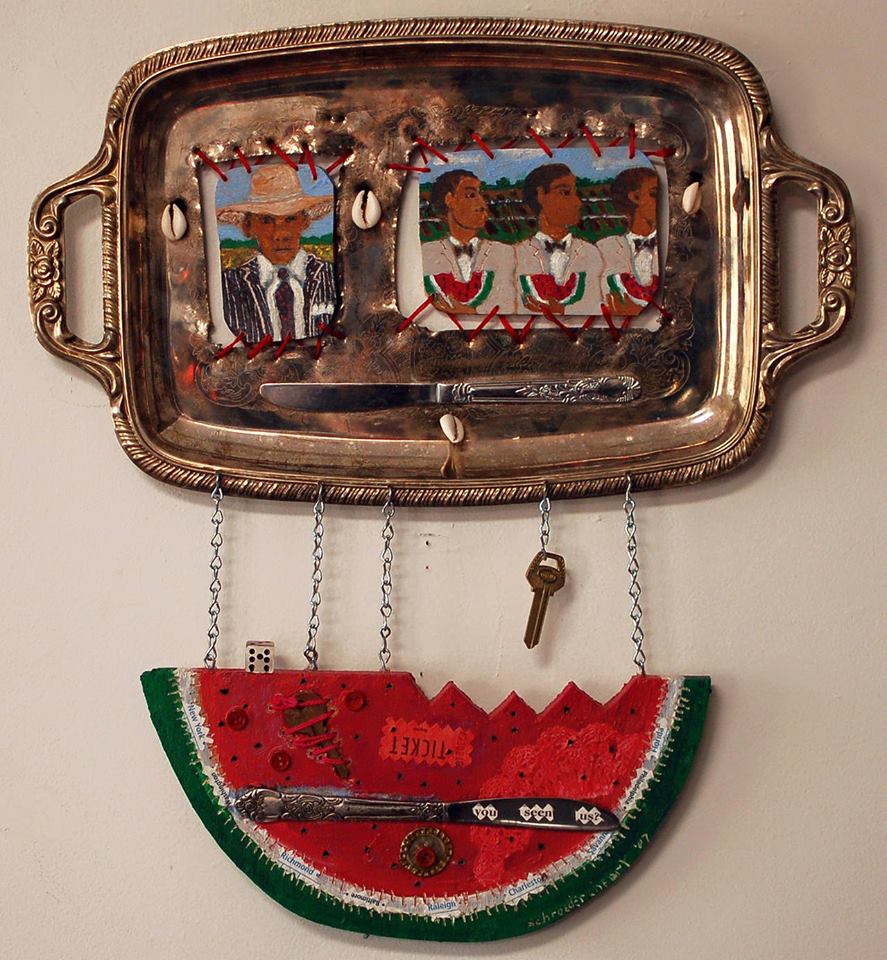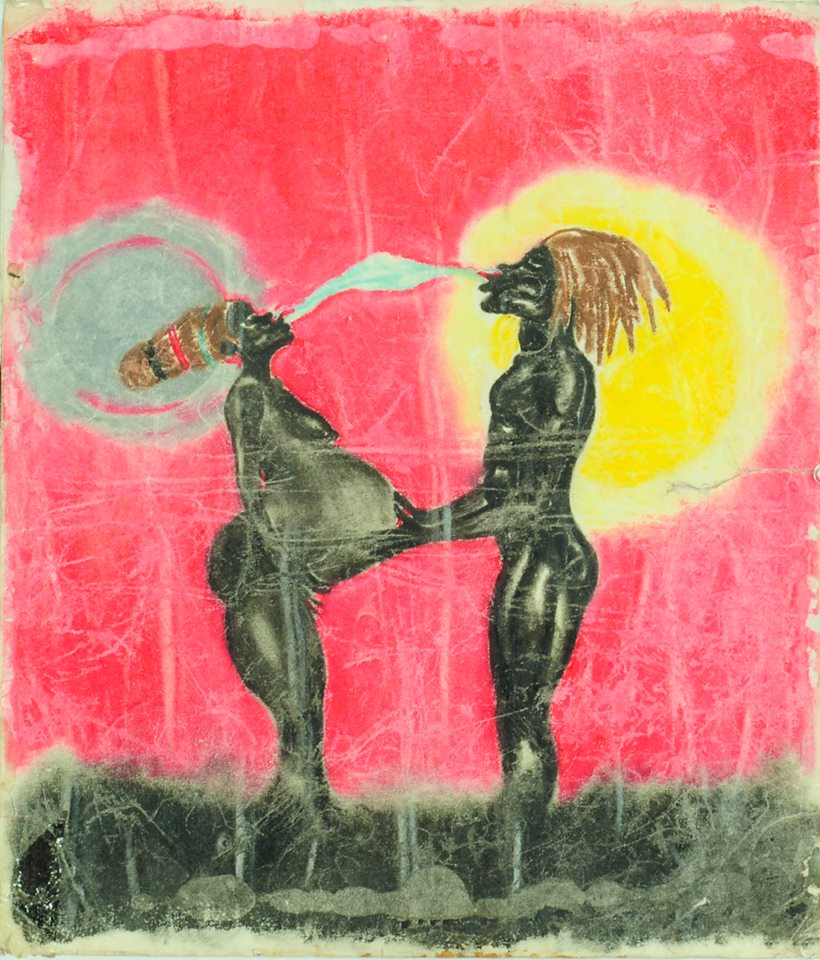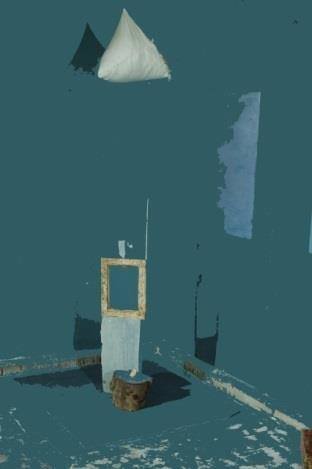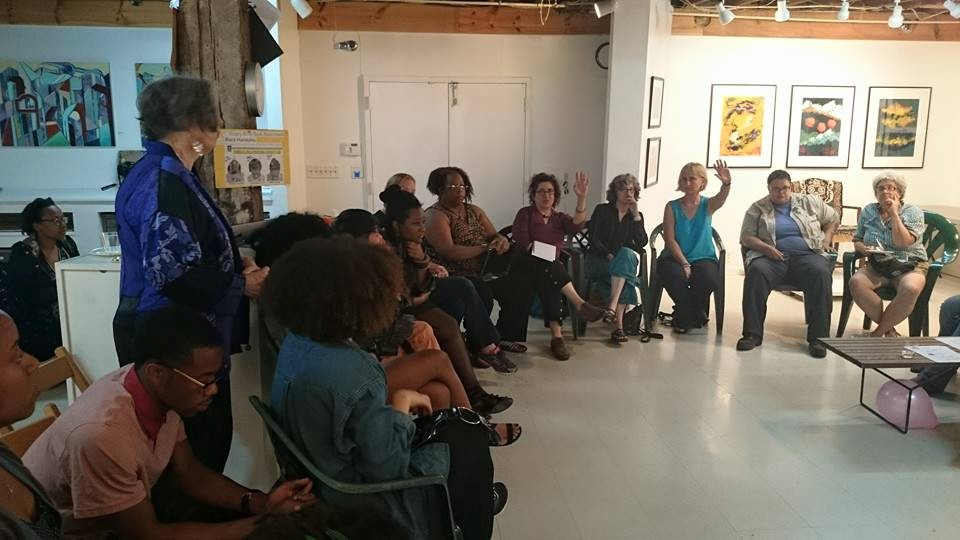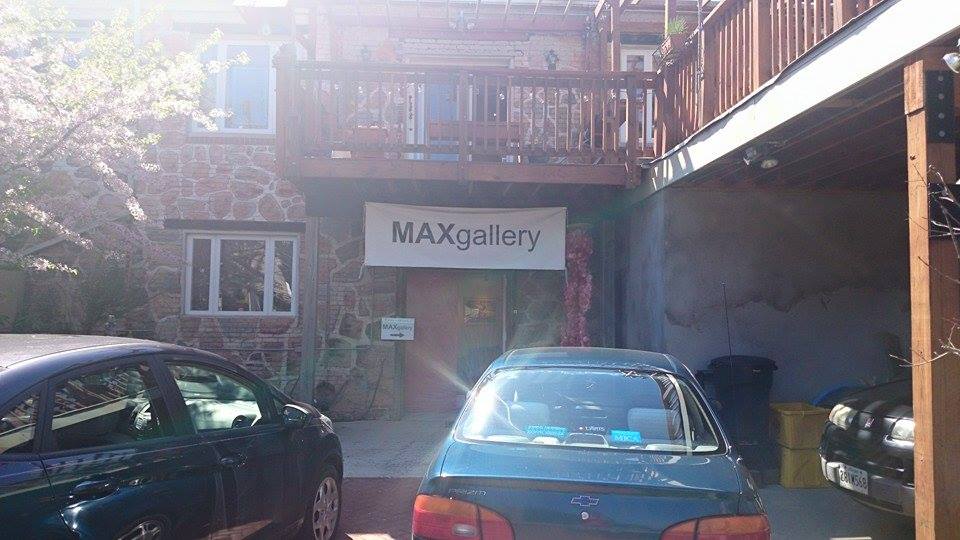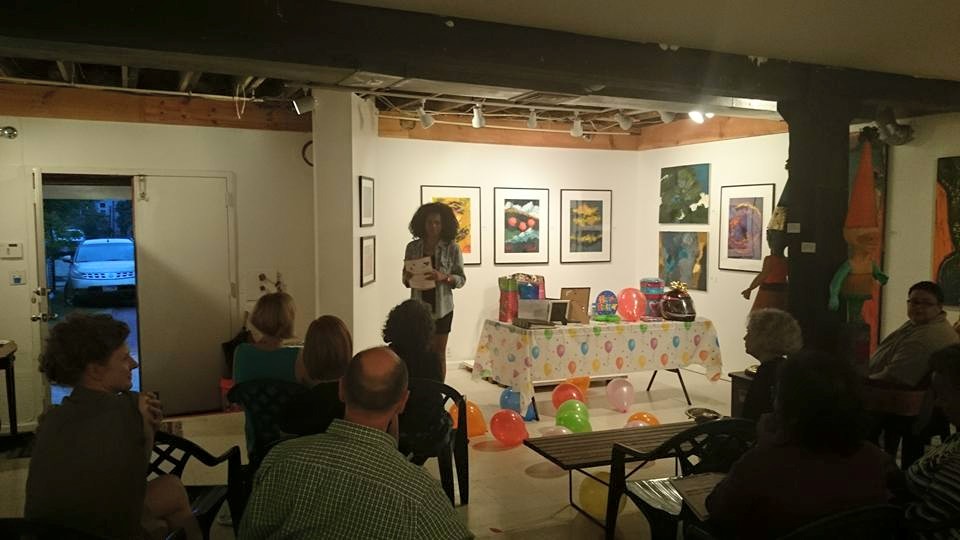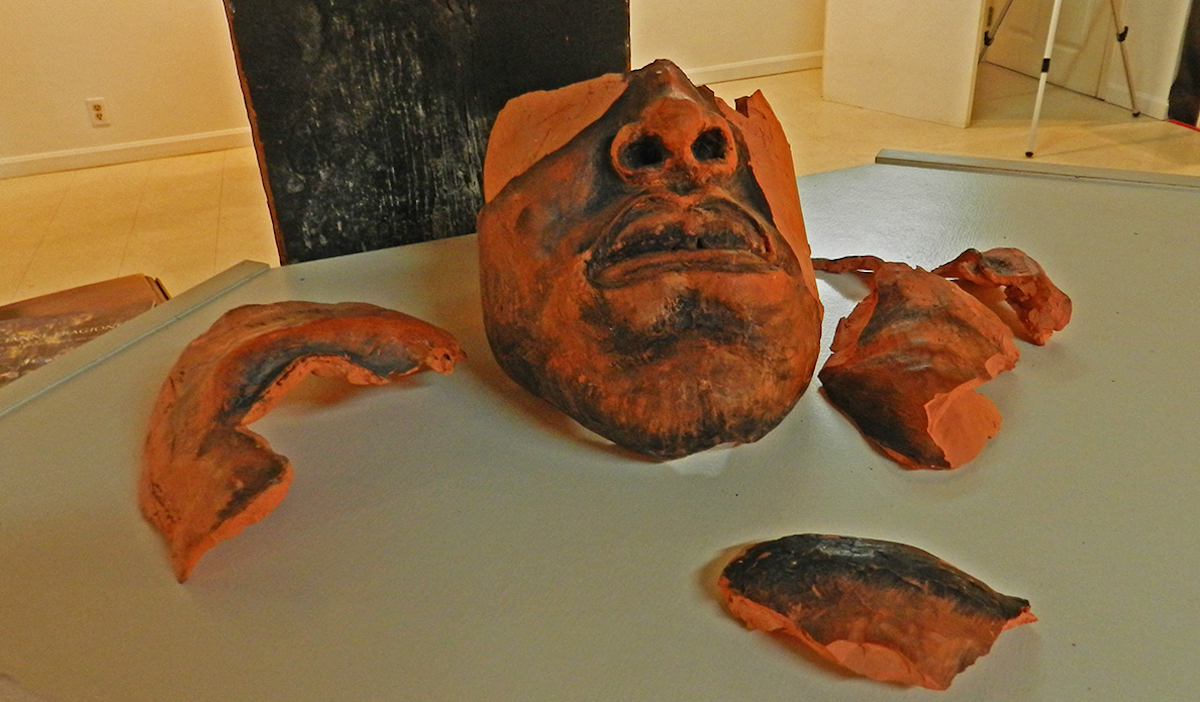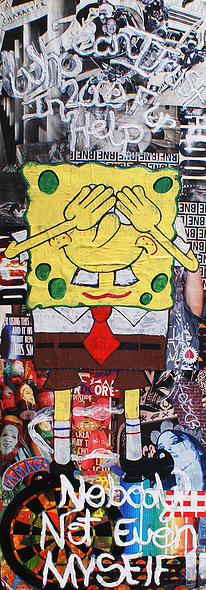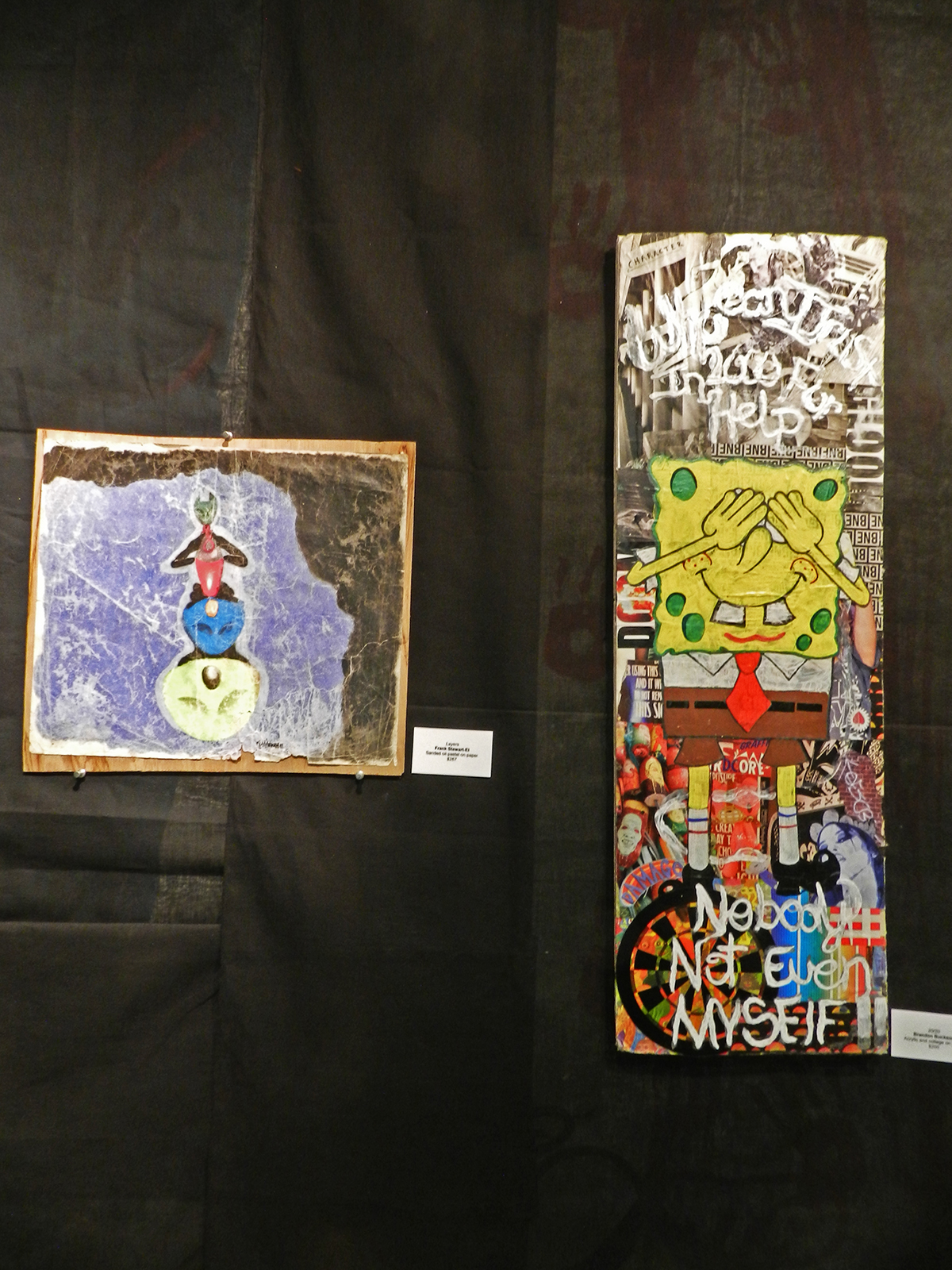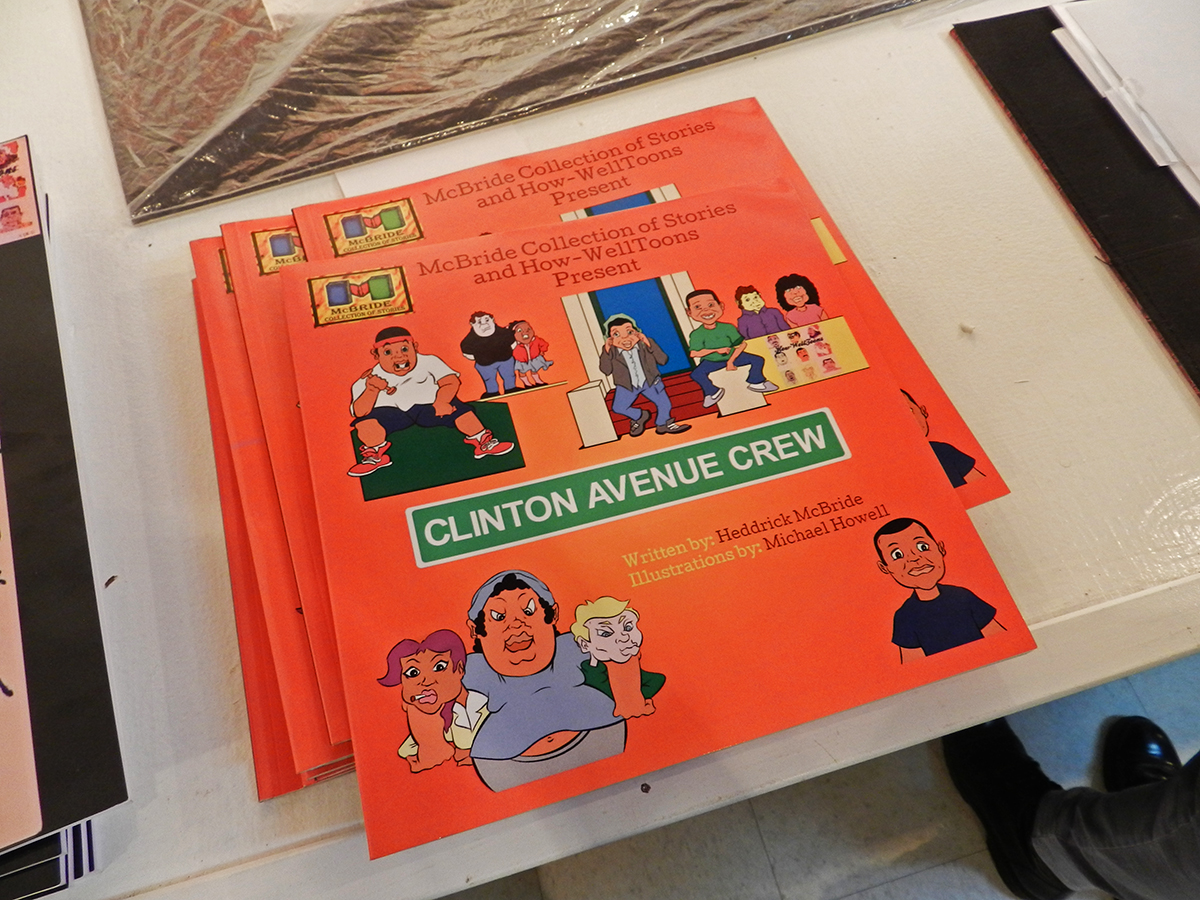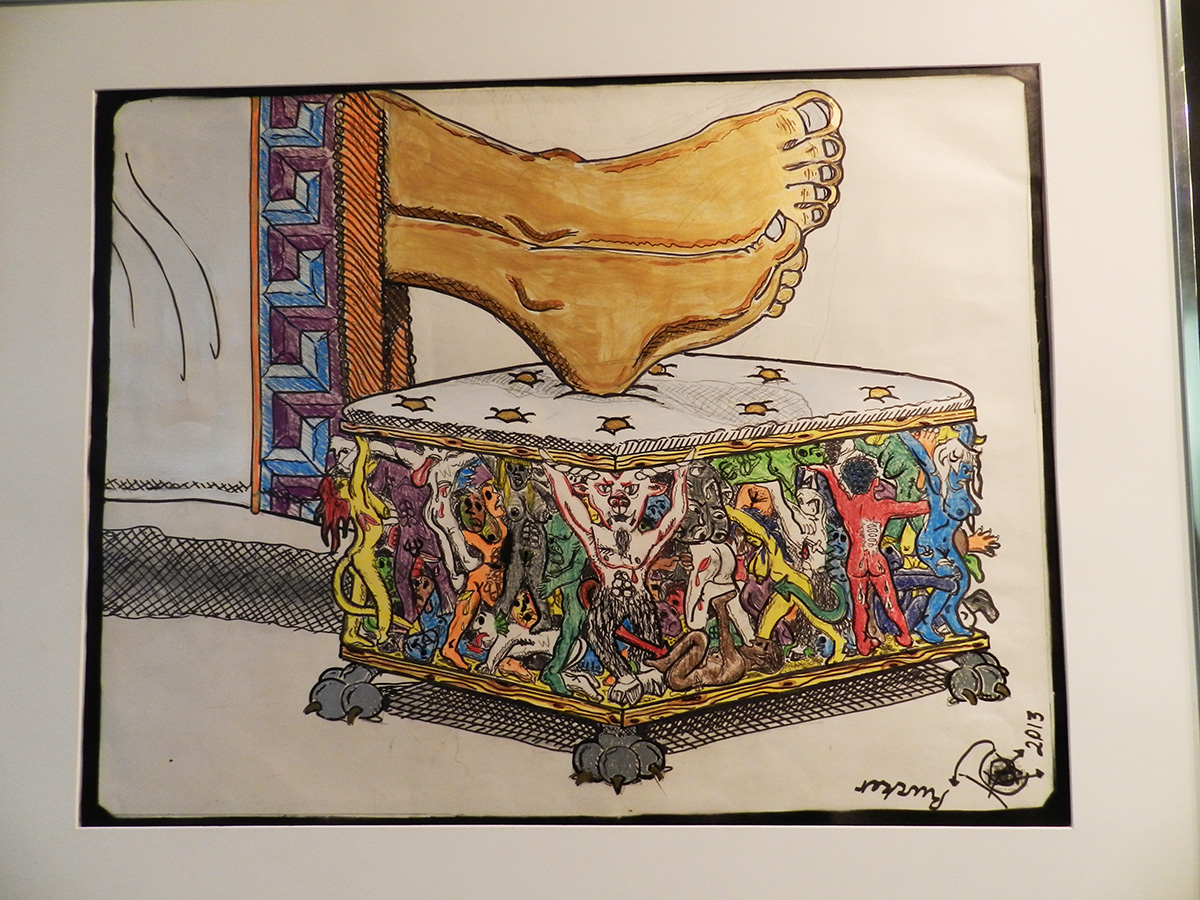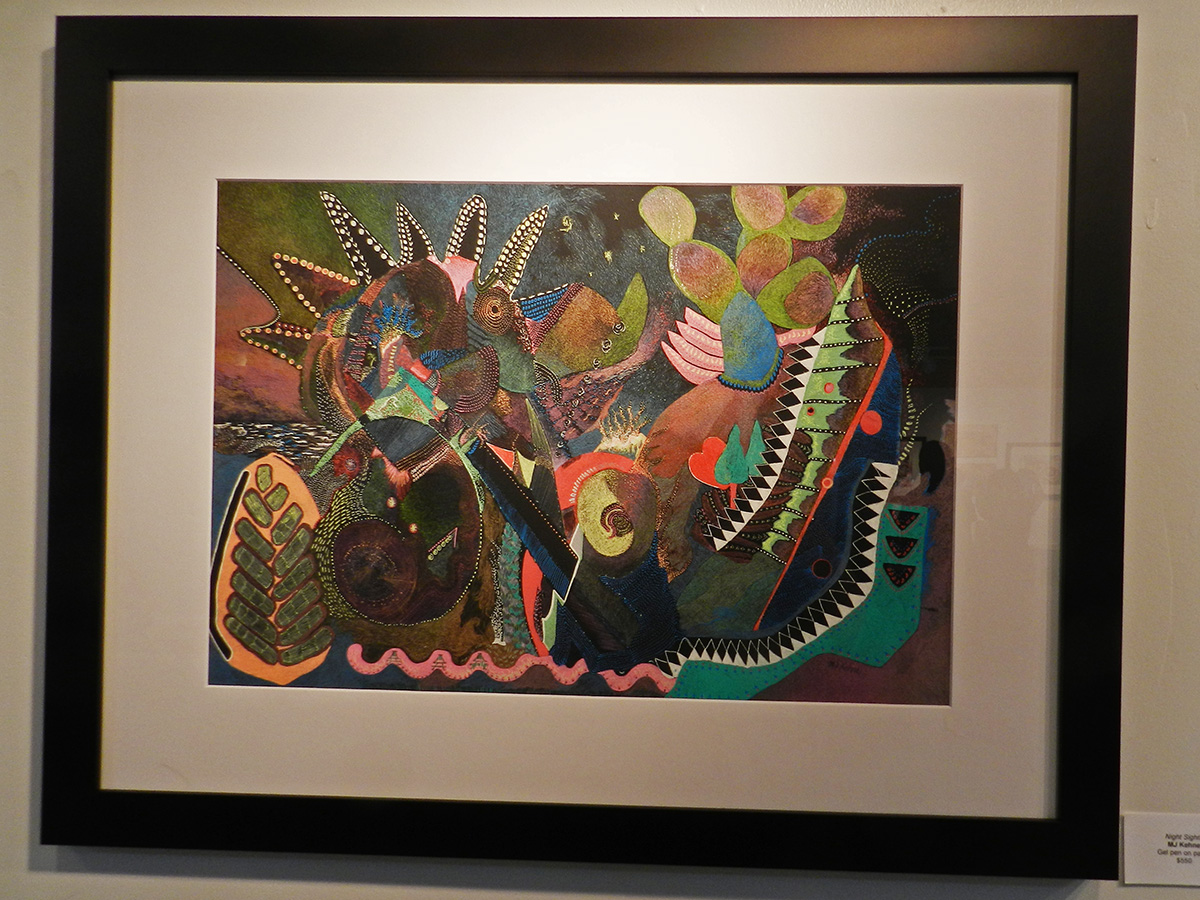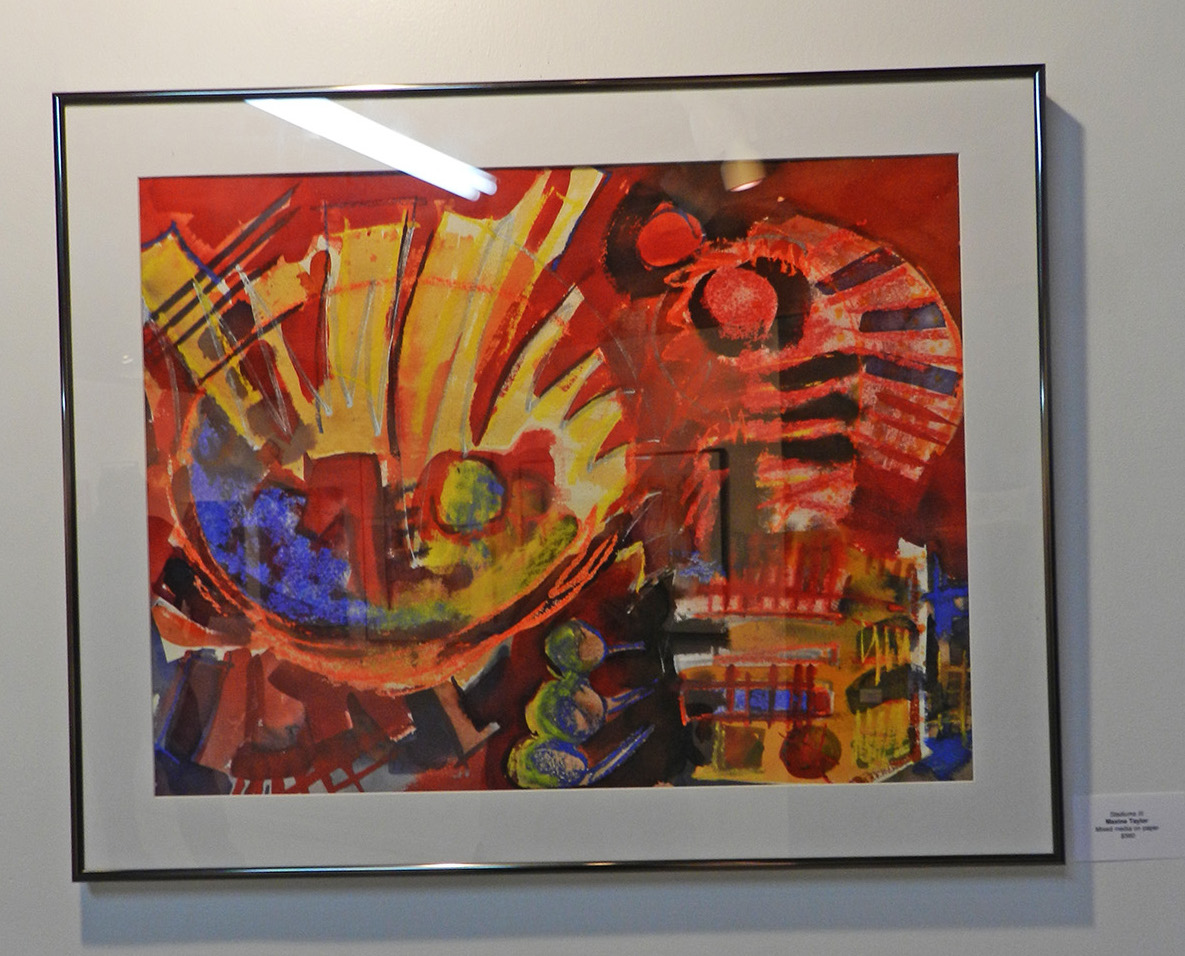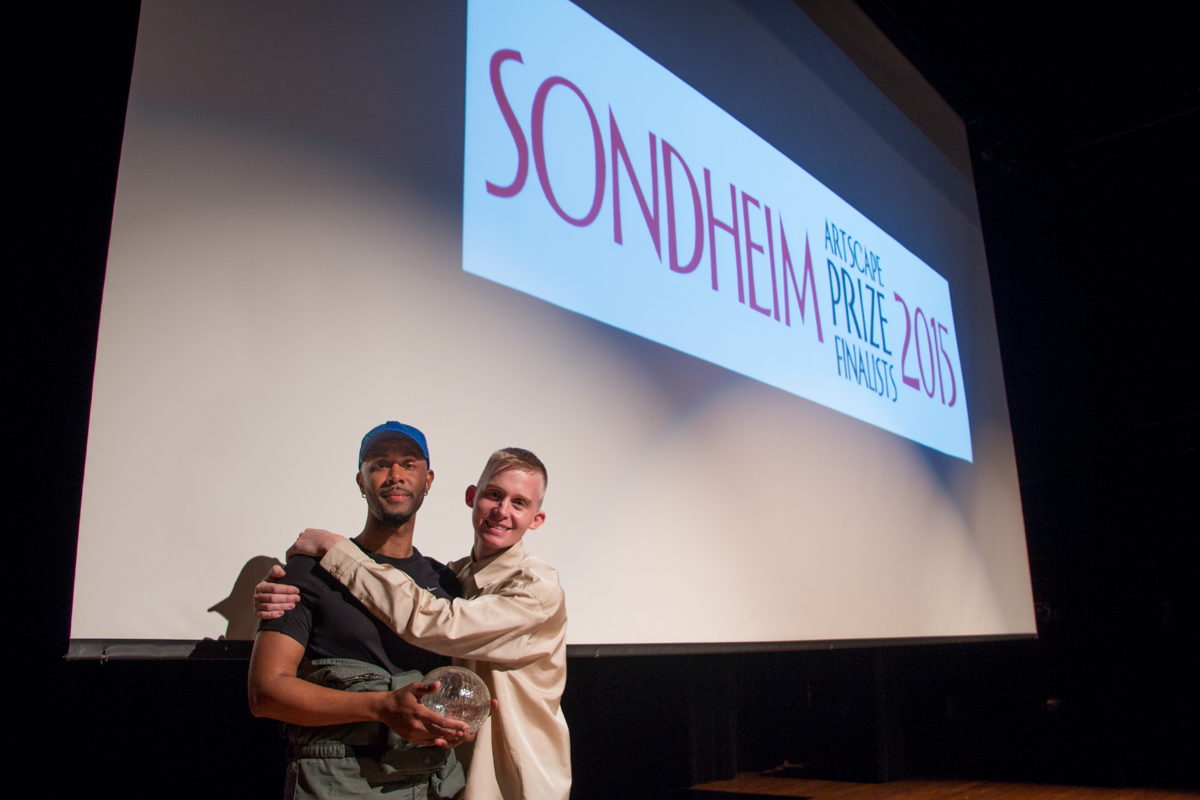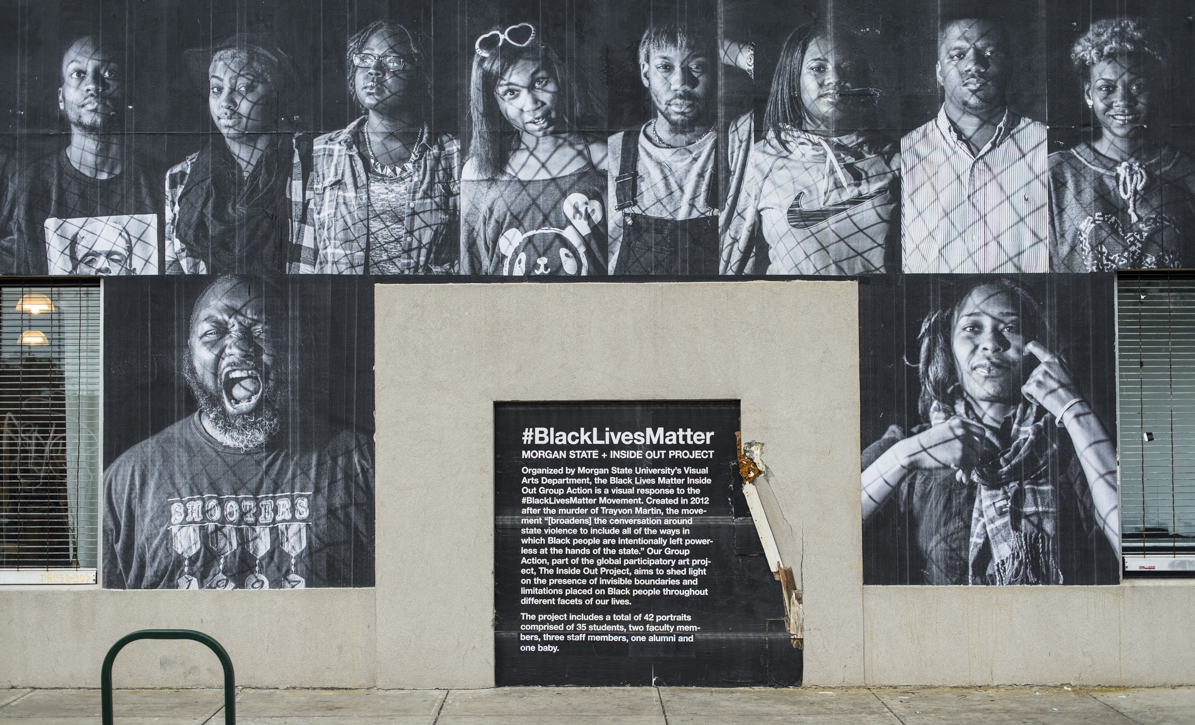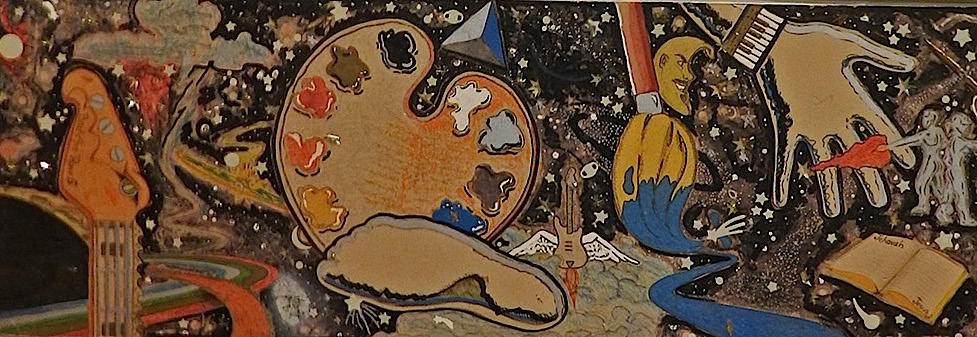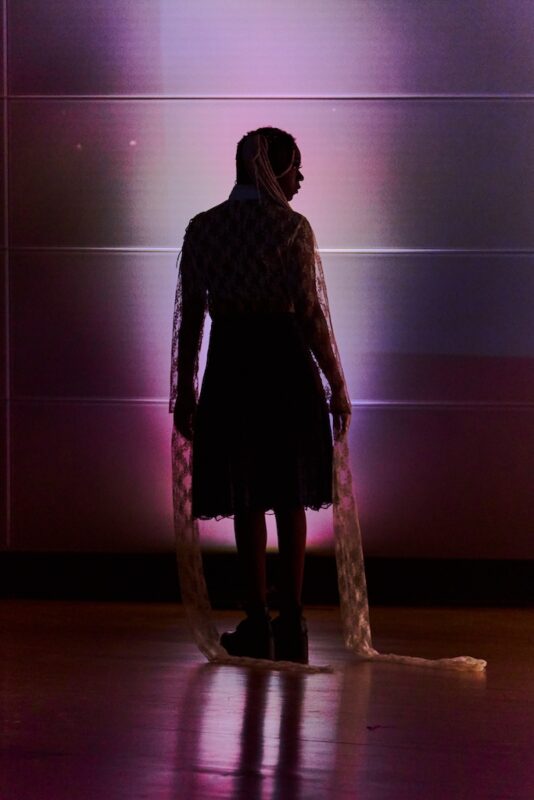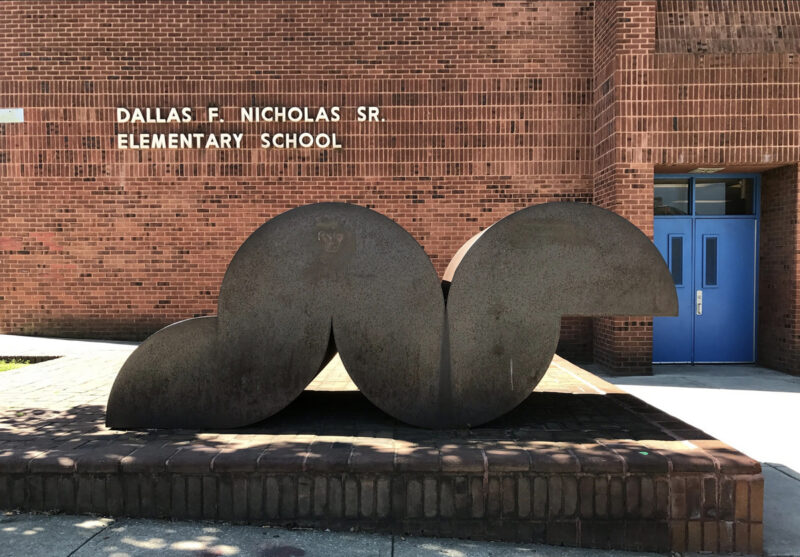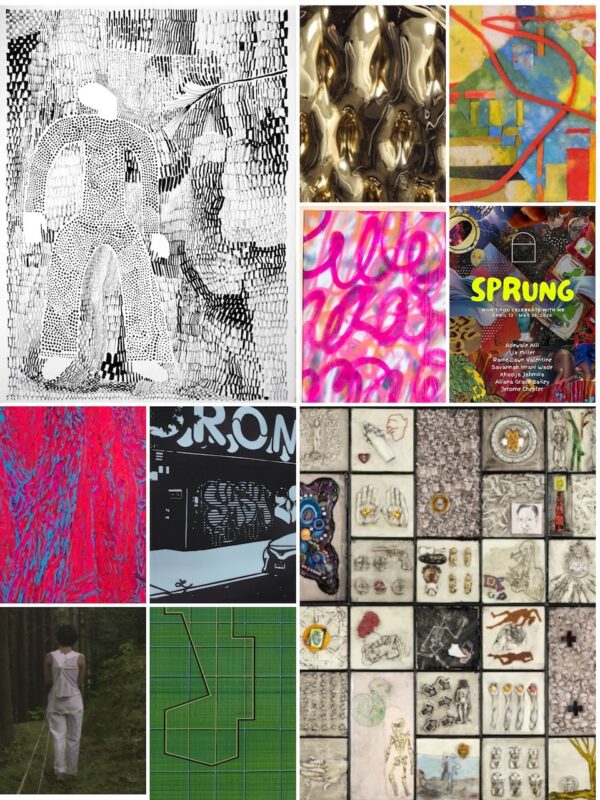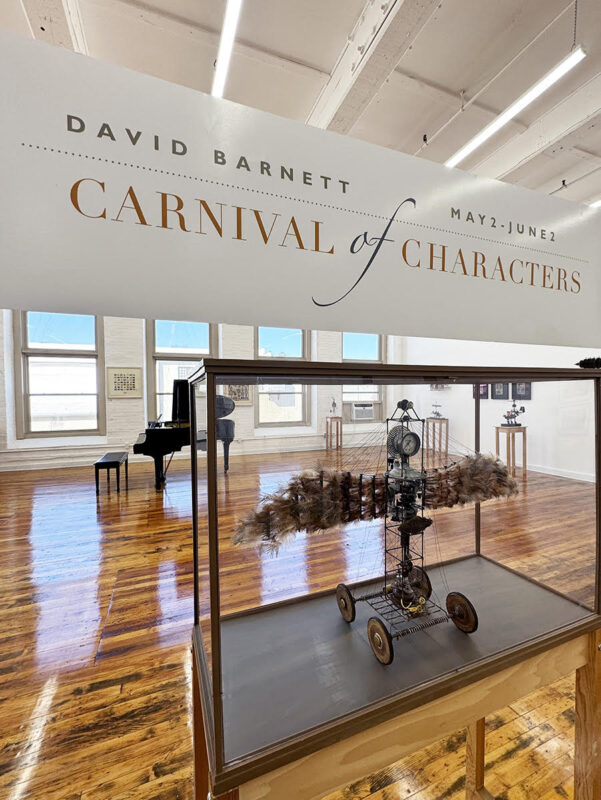Nicole Ringel on Cross This Line at Max Gallery
Cross This Line is a collaboration between Abby Bennett, a MICA Community Arts ’16 student, and MAXgallery, a ranch-style home in Butchers Hill that artist Maxine Taylor has converted into an art space.
The exhibition emerged out of a series of workshops Bennett organized through her Community Arts coursework. Aimed at building community and providing professional development for artists in East Baltimore, the workshops focused on practical skills such as documenting work, creating a strong portfolio, writing an artist statement, and curating a group exhibition. As a final project, Bennett arranged for the participating artists to exhibit their work at Amazing Grace Community Church, The Historic East Baltimore Community Action Coalition, and MICA Place.
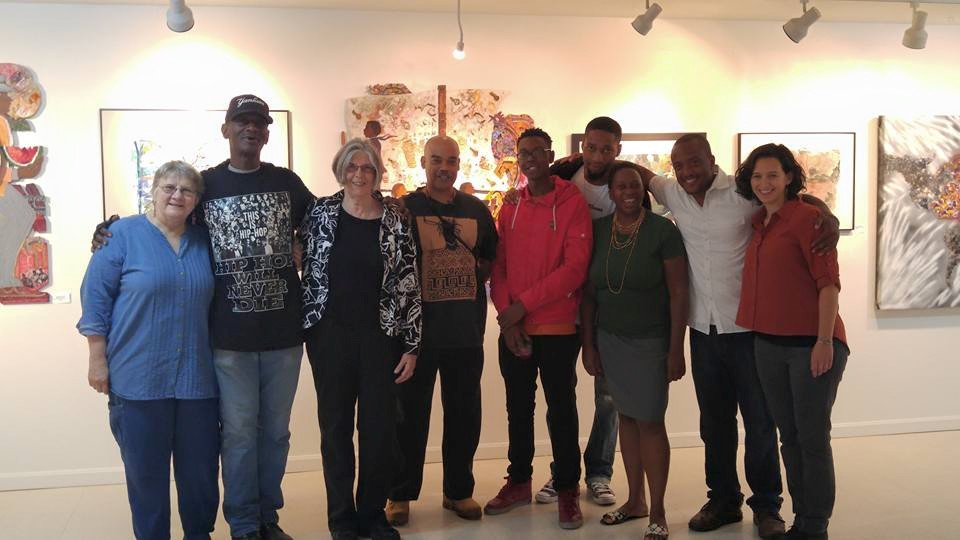
Bennett explained, “We proved that East Baltimore isn’t lacking in cultural vibrancy; unfortunately, resources and infrastructure have not been allocated to support this kind of activity. By utilizing the community’s own internal capacity for change, perhaps eventually those who hold power in Baltimore will recognize that these residents are just as deserving of beautiful community and cultural experiences as the rest of the city.”
In addition to organizing the workshops, Bennett met with the artists individually and in groups in order to truly build community that would last longer than her semester. This proved to be the case when Maxine Taylor invited the group to exhibit in her gallery. She also introduced the emerging artists to more established East Baltimorean artists who gave them further feedback, critique, and advice.
Cross This Line is the culmination of these partnerships. The collaboration empowers and encourages self-expression, providing solidarity and community to artists outside of the usual spheres of influence.
Jam-packed with a variety of sculptures, mixed media paintings, handmade books, and photography, the show includes 14 different artists, all from the East Baltimore area. Although the work presents an overwhelming variety of styles and themes, the majority of the work deals with identity, narrative, and self-expression.
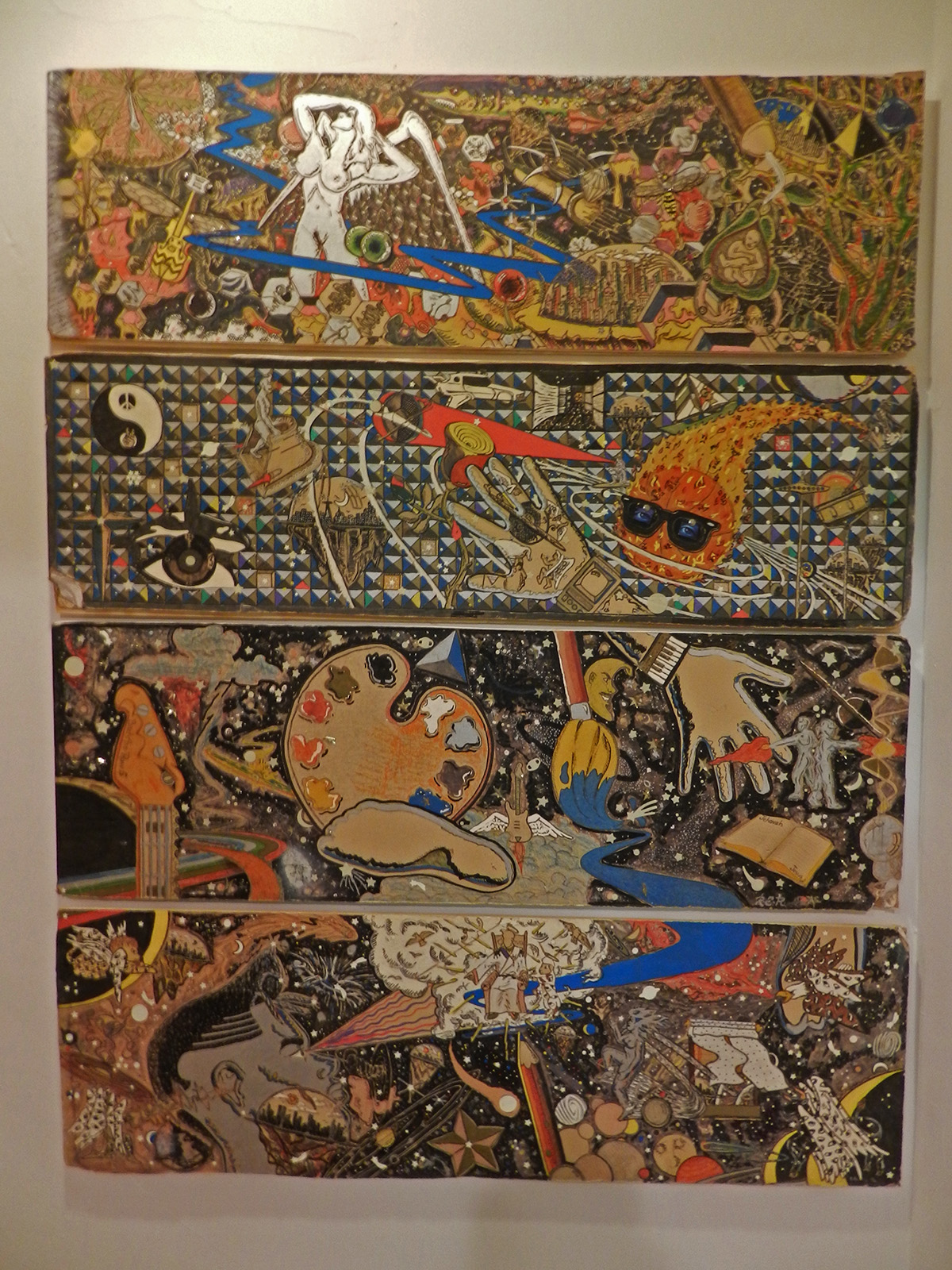
Emerging artist Ronald Rucker’s Birth of the Universe is a stylized drawing comprised of four horizontal panels. Each is set in the cosmos around stars, planets, space ships, strange winged creatures, and futuristic floating cities. A collage aesthetic adds complexity and gives the work an epic, yet somewhat chaotic, impact. The panels begin with symbols of fertility and conception. The following panels depict an assortment of tools of creative expression, from electric guitars to paintbrushes and palettes. The final panel, titled The Things with 40 Eyes shows a man, accompanied with variety of multi-eyed surreal creatures, staring upward towards a god-like figure emerging from a cloud of white smoke. The presence of musical instruments, paint, brushes, and pencils in the last two panels establish the importance of art in coming-of-age, which expresses the purpose of the group’s initiative itself.
The photography of Zizwe Allette includes glimpses of street corners and dramatic portraits. Interested in “capturing raw emotion,” Allette says the photographs attempt to “explore socio-economic issues, as well as standards of beauty.”
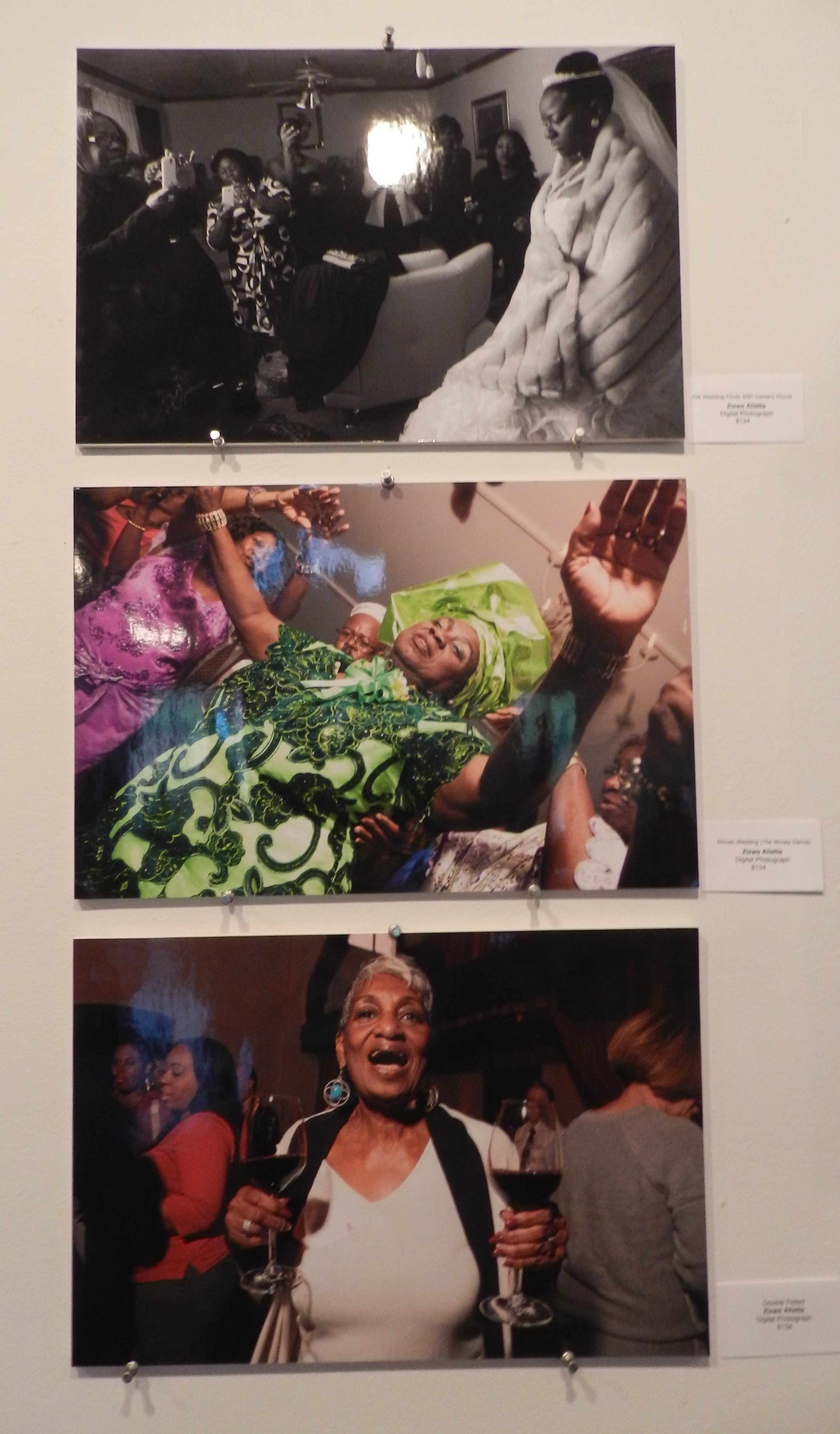
Although Allette’s photographs were scattered throughout the exhibition, three were grouped together in a vertical arrangement: Pre Wedding Photo with Camera Phone, African Wedding (The Money Dance), and Double Fisted. Printed in black and white, the top photo depicts a serious, melancholy, and uncomfortable bride, looking to the floor as her party photographs her. The alienated and removed mood of the picture is strikingly contrasted by the dance in the color images below. A woman is shown in a moment of celebration, leaning back into other women around her with her arms raised. Although she is receiving the attention of the party like the bride above, she appears the complete opposite. The joyfulness is continued in the final photograph that shows a smiling woman carrying a glass of wine in each hand. The contrast between the first photo and the second two pointedly illustrates the importance of having a sense of belonging and confidence in one’s identity.
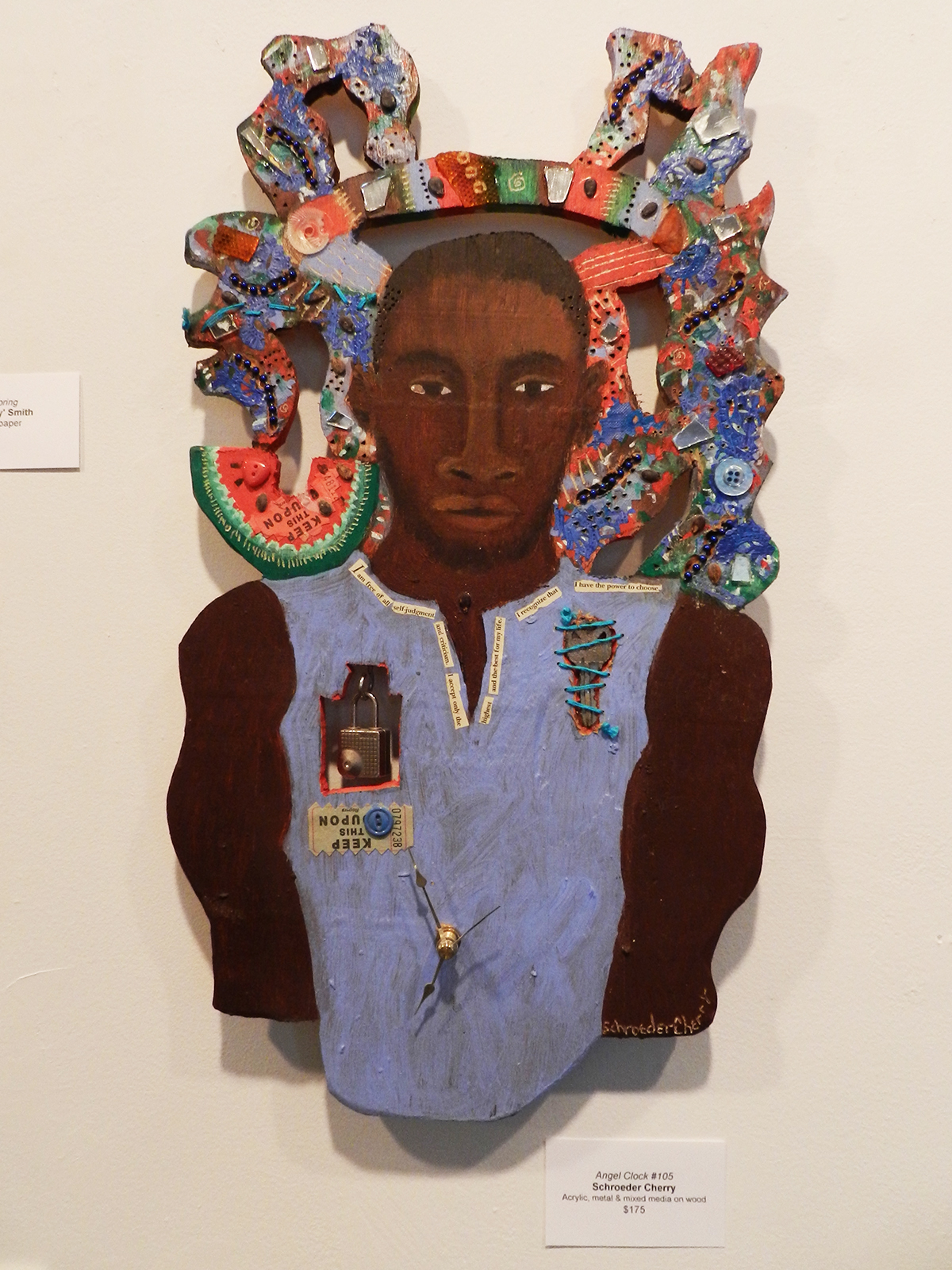
The mixed media paintings of artist and puppet maker Schroeder Cherry further investigate narrative and personal identity. Angel Clock is a portrait of a black man with a background of collaged colors and found objects. A hole is carved out of the wood panel where the man’s heart should be, and instead, a lock hangs in its place. On the right side of the man’s chest, a key is sewn into place, and across the shirt reads “I am free of all self judgment and criticism. I accept only the highest and the best for my life. I recognize that I have the power to choose.” The mantra calls to mind dedication and perseverance, yet the heart “under lock and key” illustrates desensitization and strife. This presentation of hope next to the result of difficulty becomes an expression of black identity and recognizes the importance of perseverance.
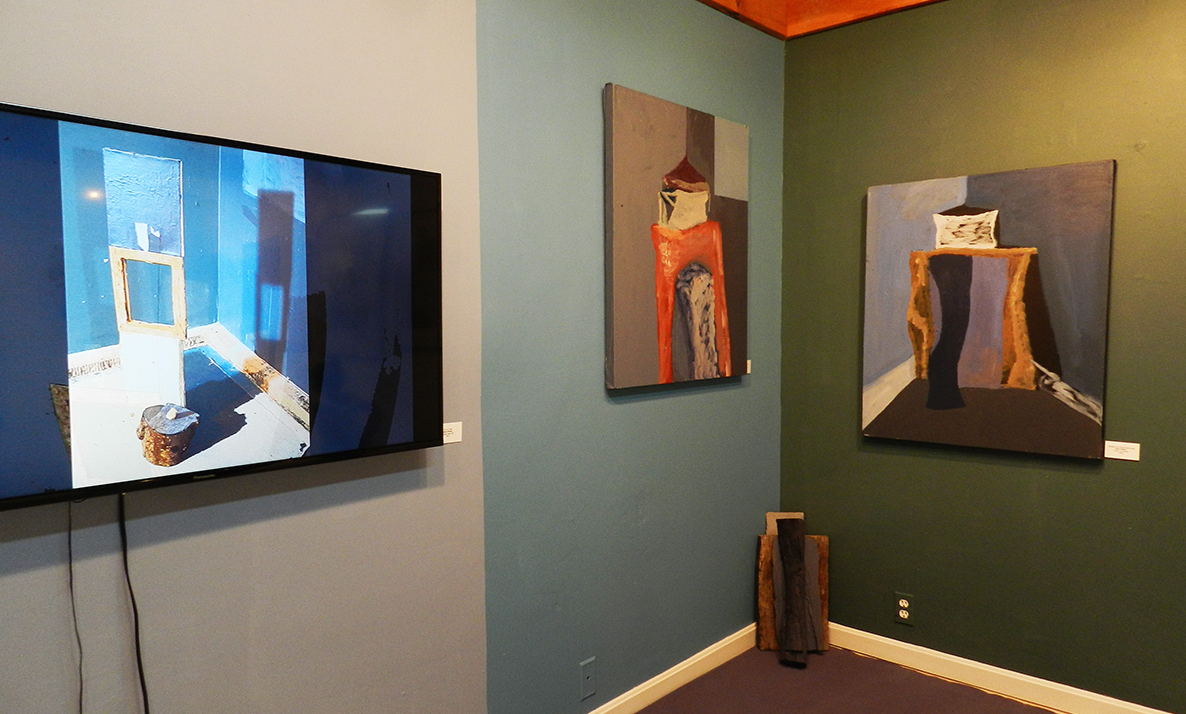
Although many individual works were successful in this exhibit, their episodic arrangement throughout the gallery created gaps in understanding and relationships. Some of the artists, such as Denée Barr, Bart O’Reilly and Abby Bennett showed their works in cohesive groups, while the others’ works were dispersed throughout the space. Michael Howell’s “How-Well Toons” were displayed in the stairwell, while the printed book version could be found on a counter two rooms away.

While in some instances contrasts created interesting interactions between works, for the most part the visual and thematic discordance was a barrier to perceiving which artists were which. A thematic approach to arrangement or allowing each artist to portray their work in cohesive bodies would have been more advantageous.
Regardless of curatorial style, “Cross this Line” is an excellent opportunity for introduction to a whole new community of artists in Baltimore. The exhibit also provides insight into a successful collaborative project between emerging artists, experienced artists, and MICA’s Community Arts Program that should continue indefinitely.
Author Nicole Ringel was raised in Frederick, Maryland and is currently pursuing a BFA in Studio Art and Art History at McDaniel College in Westminster, Maryland. She is an artist and reader, and is especially interested in community and socially engaged art.
Cross This Line will be on exhibit at Max Gallery through July 25, 2015.
